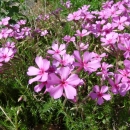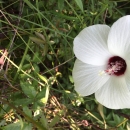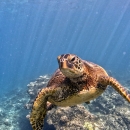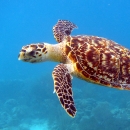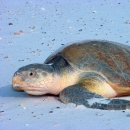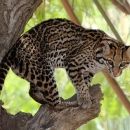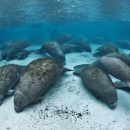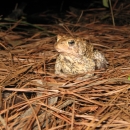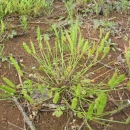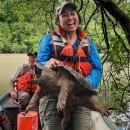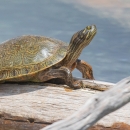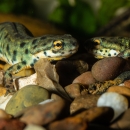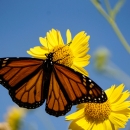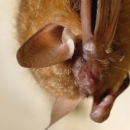Featured Species
With over 68 counties and such a wide variety of habitats, our field office relies heavily on partners and multi-agency, state, and field office efforts to conserve and protect these beautiful resources. The locations of the Corpus Christi and Clear Lake’s field offices make them hotspots for a wide array of migratory and resident bird species. Along the coast we have essential stopover sites for birds coming across the long stretch over the Gulf of Mexico, providing refuge to warblers, flycatchers, hummingbirds, and buntings. Migrating hawks can be viewed at the Gulf Coast Bird Observatory’s Smith Point Hawk Watch or Hazel Bazemore Hawk Watch near Corpus Christi. Other birding hotspots including Leonabelle Turnbill Birding Center, Nueces Delta Preserve, and Port Aransas Nature Preserve. Coastal Bend Bays and Estuaries Program, energy companies, and volunteers have helped to restore and plant marsh grasses along bird islands to assist local bird rookery islands. Take a trip to the coastal marshes of Rockport and surrounding areas to view the iconic and federally endangered wintering whooping crane. These birds can be seen foraging on wolf berries and blue crabs. In partnership with Louisiana Department of Wildlife and Fisheries, International Crane Foundation, and so many more organizations, we have acquired new areas for habitat, expanded the species’ wintering range, and boosted successful reintroduction into new areas. Two other key bird species include the piping plover and red knot. Found only in our coastal zone, these birds forage on polychaete worms, a type of bristle worm, and other small invertebrate species frequenting the protected bays and flats behind the beach. Our staff along with U.S. Geological Survey, refuges, Audubon Society, researchers, volunteers have participated in the International Piping Plover Census to gather data about the species’ population status. Coordinated efforts with development companies and the U.S. Army Corps of Engineers on coastal restoration and development projects are vital to retain the needed habitat for these species.
Our office works to conserve a suite of native and endemic rare plant species. From the Texas trailing phlox in the Pineywoods; to South Texas ambrosia in the shortgrass prairie; to the Walker’s manioc in the Tamaulipan thornscrub, our field office relies heavily on partnerships to conserve these plants species. With more than 98% of Texas being privately owned, our partnerships with private landowners, citizens, the public, and the State are essential to conserving, monitoring, and protecting these species in their native geographic range. Collaboration between timber companies, The Nature Conservancy, universities, and Texas Parks and Wildlife Department and permission to access known populations has enabled the review of the genetic relatedness of populations for the Texas trailing phlox. By working closing with the Texas Department of Transportation and Naval Air Station Kingsville, our field office has been able to access and monitor known populations, collect seeds for banking, protect plants from road construction projects, and test species’ response to burning and other management regimes. Many of these efforts benefit other prairie species in our area, including the Northern Aplomado falcon and the monarch butterfly. Partnerships with private landowners and ranchers in South Texas enabled the successful recovery of Johnston’s frankenia and removal from the Endangered Species list. These partnerships continue to restore and protect the Tamaulipan thornscrub habitat used by the extremely rare and endangered ocelot and Gulf coast jaguarundi.
Many amphibians and reptiles are native to the south and upper Texas coast. The Houston Zoo, Dallas Zoo, Fort Worth Zoo, San Marcos National Fish Hatchery, Texas State University, and our field office continue to breed, raise, and introduce Houston toads into their native geographic range as part of a headstart program to increase the species’ numbers. Recently, our field office has secured funding for additional research and recovery efforts to benefit the Houston toad. The entire Texas coast is home to marine and beachfront habitats that our five endangered sea turtles use for nesting and foraging. The Kemp’s Ridley sea turtle has rebounded in number due to the persistent efforts by the Padre Island National Seashore, in coordination with our staff. Nests are protected in-situ on the beach, eggs are collected and hatched, and then hatchlings released back into the Gulf of Mexico to aid the species’ overall viability.



